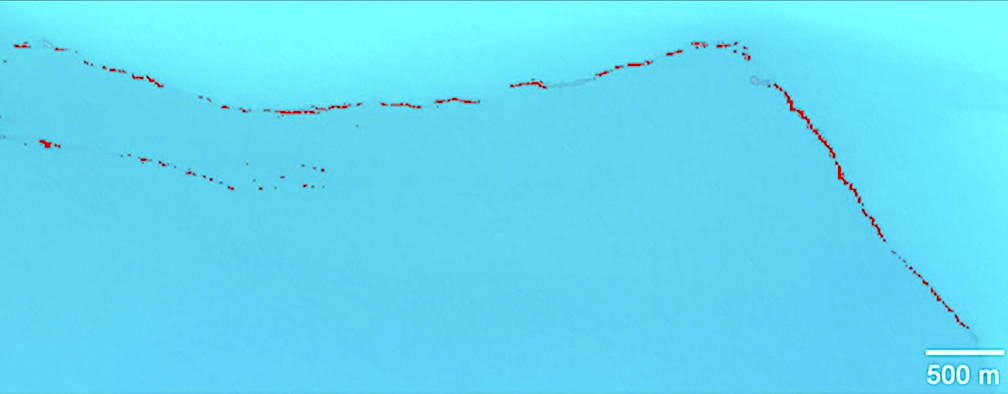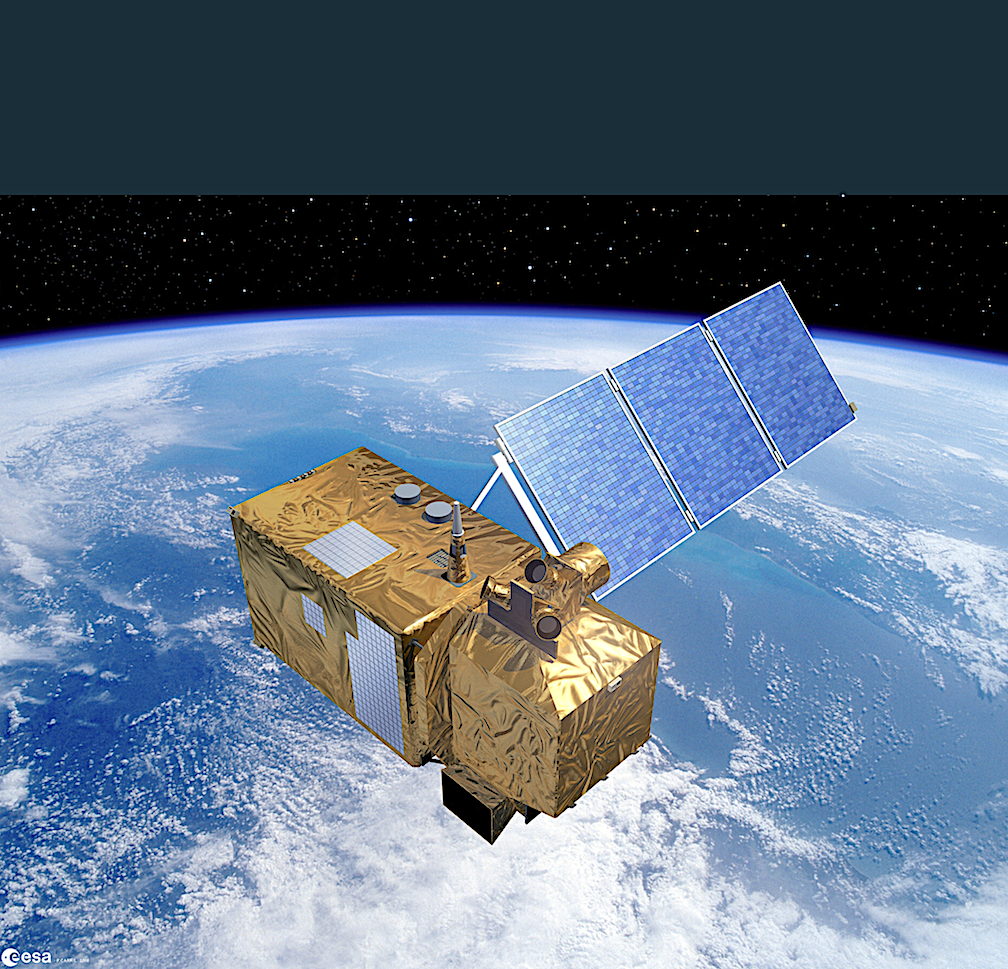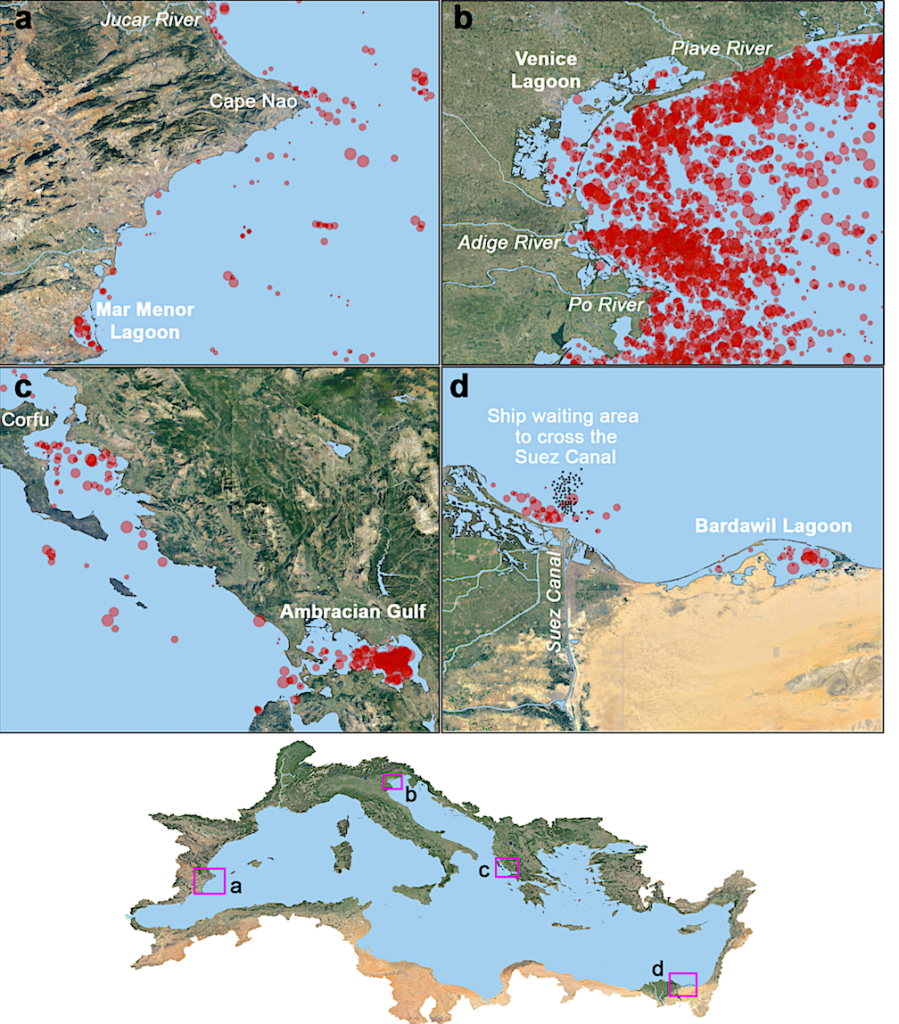
The quantity of plastic floating on the sea surface is rarely high enough to generate a detectable signal from space. Plastics and other floating debris have to accumulate into dense patches of at least tens of metres in area to be detectable using existing satellites.
These patches of floating litter are called ‘slicks’, ‘streaks’ or ‘litter windrows’. They are often filament-shaped, resulting from the presence of convergence current lines on the sea surface.

CREDIT
Rivages Pro Tech, Suez Eau France.
Detecting such litter windrows is indicative of high pollution at a particular place and time. But could such scattered and short-lived patches of litter provide sufficiently useful data for global monitoring of plastic pollution?

Cózar et al. (2024) Proof of concept for a new sensor to monitor marine litter from space. Nature Commun. 15, 4637
“We didn’t know if the abundance of litter windrows was enough to draw maps, or to reveal trends over time,” notes Andrés Cózar, from the University of Cádiz, co-director of the project.
To find out ESA Discovery funded a consortium of space companies and research institutes from six countries. Using a six-year historical series of 300 000 satellite images, the team scanned the entire Mediterranean Sea every three days, at a spatial resolution of 10 metres, on the hunt for windrows.
They relied on the multispectral imaging Sentinel-2 satellites of Europe’s Copernicus programme, which while not designed for litter detection, have a somewhat limited capability for plastic detection.
“Searching for litter aggregations of metres in size on the ocean surface is like looking for needles in a haystack,” explains Manuel Arias, from the Institute of Marine Sciences, CSIC, in Spain, the other project co-director.

Automation was what made the project possible, harnessing supercomputers and advanced search algorithms. The team found thousands of litter windrows, most more than a kilometre long – and some reaching 20 km in length. The result was the most complete map of marine litter pollution to date.
“Litter detections with a non-specialised satellite allowed us to identify the most polluted areas and their major changes over weeks and years,” comments Andrés Cózar. “Litter is injected into the Mediterranean Sea as the rainstorms rage.”
A key element of this work has been in understanding the significance of the litter windrow structures in the context of marine monitoring, being mainly associated with land-based litter emissions in the preceding days.
This makes them especially useful for surveillance and management of the problem. In the paper the team assess the effectiveness of action plans against marine litter around Rome, identify a pollution hotspot related to shipping through the Egypt’s Suez Canal and put forward satellite data for guiding cleanup operations in Spain’s Bay of Biscay.
Manuel Arias explains: “The tool is ready to be used in other world regions, which I am convinced will teach us much about the littering phenomenon, including identification of sources and the pathways to the ocean.”
Andrés Cózar adds: “There is still room for improvement. The sensor used in our proof was not designed to detect plastic. Detection capability would be enormously improved if we put observation technology into orbit tailored for ocean plastics.”
The ability to monitor marine litter pollution in this way also holds broader promise. The deployment of a sensor specifically dedicated to detect and identify floating objects one metre in size could also be useful for tasks such as oil spill monitoring, loss of cargo or even search and rescue at sea.
Paolo Corradi, overseeing the project for ESA Discovery, comments: “The importance of these results and the applicability of this methodology can indeed be extended in a wider sense to the monitoring and characterisation of generic floating matter accumulations. This could be the more general target of a dedicated small satellite mission, which would collect the interest of a large scientific community, while addressing the need for large scale monitoring of marine litter pollution.”

“ESA Discovery is our funding programme to ensure our Agency is ready for tomorrow, looking into future ways we might make use of space,” comments Dietmar Pilz, ESA Director of Technology, Engineering and Quality. “The potential detection of marine plastic litter has been a topic of interest for a number of years within ESA Discovery. I am pleased to see this work has resulted in such a landmark scientific paper, exploiting the incredible value of the data from Europe’s Copernicus satellites.”
Along with the University of Cadiz and CSIC, the team is composed of researchers from ESA; ARGANS in France and UK; Universitat Politècnica de Catalunya in Spain; the Consiglio Nazionale delle Ricerche, ISMAR-CNR, in Italy; the Technical University of Crete in Greece; Airbus Defence and Space in France; the Joint Research Centre, JRC, of the European Commission, The Ocean Cleanup in the Netherlands; and ACRI-ST in France.
The study was funded by ESA and the Spanish Ministry of Science and Innovation (Global Litter Observatory, ref. CTM2016-77106-R/ AEI/10.13039/501100011033/ European Union NextGenerationEU/PRTR).
